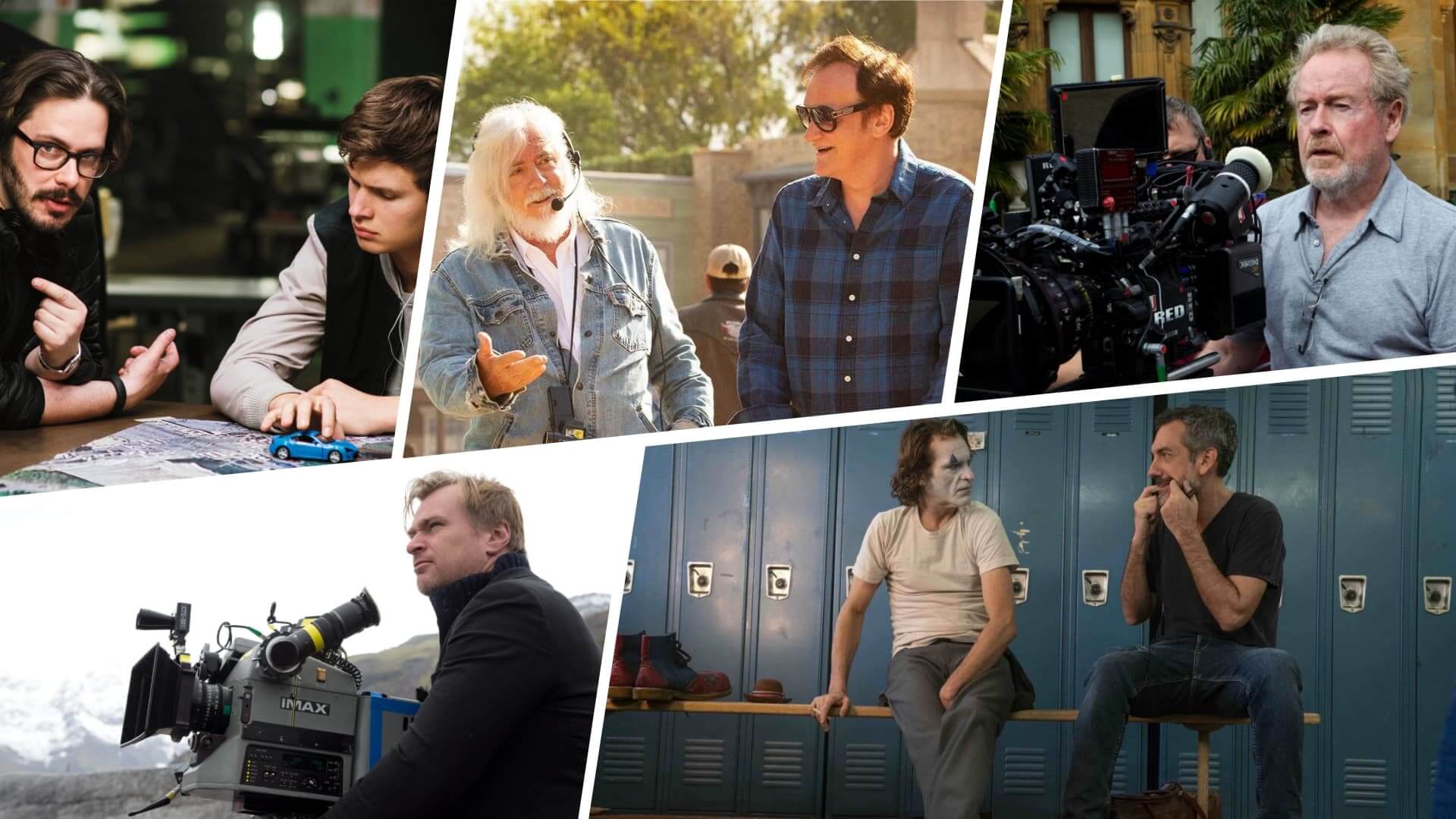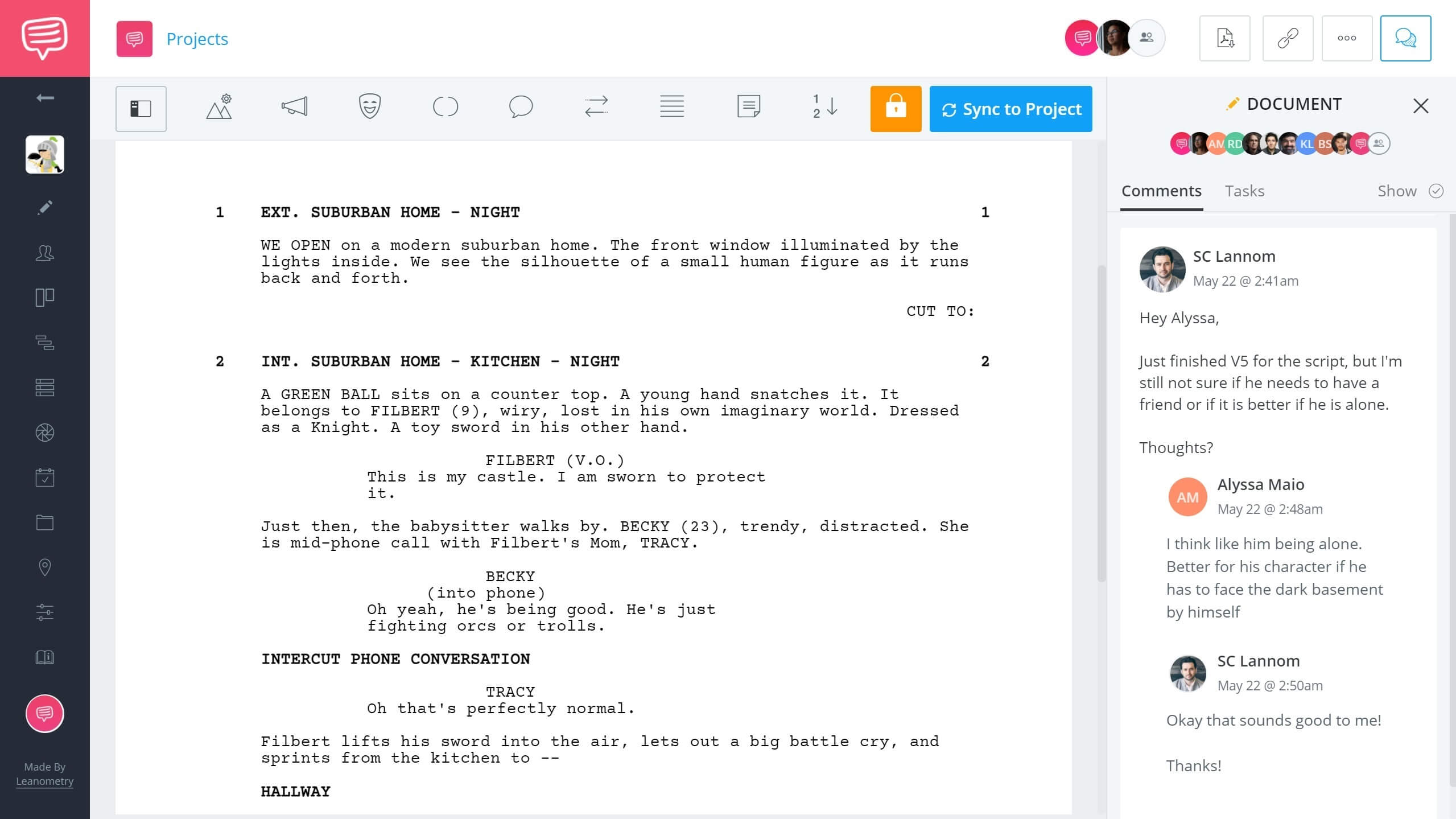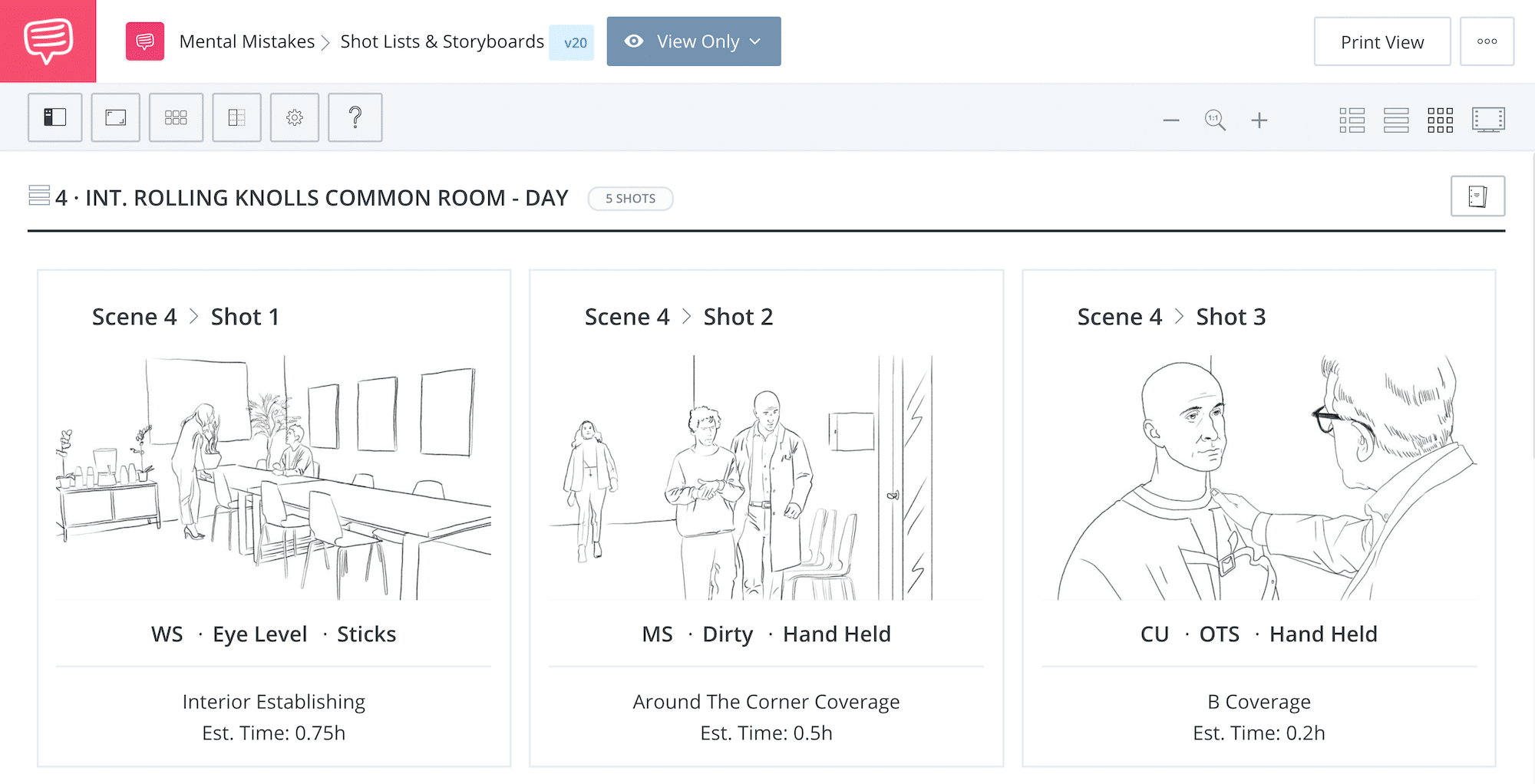Knowing precisely what a director does in every stage of a production’s life cycle is vital to your success in the industry. A director’s job description involves participation in nearly every phase of a project. Because their vision largely impacts the final product, directors work closely with department heads and technicians to bring it to fruition. The duties of a film director are many, but don’t worry: We’ll lay it all out here. So, what does a director do? Let’s break it down.
Film director definition
A film director wears many hats
What is a director's job in a film? Understanding the day-to-day tasks of a film director requires more than a brief definition. And of course, their tasks are altered a bit if they are working in theatre or TV (on a series, many major decisions that inform theme and style are already in place). For a complete guide to the major roles in film production, check out our ultimate guide to film crew positions.
So here, we'll focus primarily on a film director definition.
FILM DIRECTOR JOB DESCRIPTION
What does a film director do?
A film director manages the creative aspects of the production. They direct the making of a film by visualizing the script while guiding the actors and technical crew to capture the vision for the screen. They control the film’s dramatic and artistic aspects.
WHAT DOES A DIRECTOR DO FROM START TO FINISH?
- Interpret scripts
- Set the tone of film
- Work with department heads
- Work with casting directors to find talent
- Direct actors and the camera
- Work with editors to assemble the film
- Work with sound and music departments
Now that we've outlined a basic film director job description, let’s hear from an iconic filmmaker on how he implements his vision.
In an episode of StudioBinder's Director's Chair series, which reveals influential auteurs' tricks of the trade, Quentin Tarantino discusses his particular approach as a film director.
Tarantino has his own version of a film director job description • Subscribe on YouTube
Although the film director is involved in all stages of filmmaking, sometimes their role in each of those stages can be misconstrued.
The development stage, for instance, is often confused with the pre-production stage. Typically, development is taken care of by the screenwriters and producers, and directors enter the picture in pre-production.
This isn't always true (especially when the director also happens to have written the script). The director usually makes comments, tweaks, or changes to the script during development. Still, it’s really in pre-production where the film director plays a major role.
WHAT DOES A DIRECTOR DO IN PRE-PRODUCTION?
Approach pre-production practically
Remember: A director's effectiveness in implementing their vision during pre-production boils down to budgeting and script breakdowns as much as it does artistic intent.
You can see how this plays out in our Making It series, which follows filmmaker SC Lannom throughout pre-production as he makes the proof of concept for his TV series, Mental Mistakes.
In the first episode, Lannom identifies every essential production element in his script. What does a producer do to aid the director at this stage? In this case, producer Herman Wilkins creates a budget within the production parameters that have been set:
What does a director do? StudioBinder's Making It series breaks it down • Subscribe on YouTube
WHAT is a director's role in PRE-PRODUCTION?
Making changes to the script
Whether they've written the screenplay or not, the director will want to wade through the entire draft during pre-production to gauge how much of it will need rewrites or revisions.
We put a script into StudioBinder's screenwriting software so you can see what the interplay between director and writer might look like. Note how the filmmakers of the project below exchange comments on plot ideas:
What is a director's approach to story? No script is ever "finished"
Related Posts
a director's pre-production tasks
Working with department heads
A film's tone should be thoroughly considered and discussed before the first shot is taken. The film director has the final say on this and it’s up to them to execute it.
How? By communicating with every department head, from cinematographer to the production designer. The entire crew must be on the same page to be able to execute their vision.
Episode Two of Making It navigates the nitty gritty of hiring department heads. Watch how Lannom and Wilkins hone in on crew members ideally suited for their project.
What do directors do to find the right department heads?
How a film director plans a shoot
Storyboarding and shot listing
Storyboards and shot lists help to plot out your vision beat by beat. To communicate the desired look and feel to the cinematographer and production designer, the director will probably want to share their storyboards. That way, the department heads can make changes or leave comments in real time.
Take this storyboard from Mental Mistakes, for example, which we've uploaded to StudioBinder's storyboarding software. Each panel includes information on camera shot framing, camera angles, and camera movement that the cinematographer can use to plan shots well in advance.
Click below to see the entire storyboard.
Planning to create boards of your own? You'll need to know the fundamentals first. A good place to start: Consult a step-by-step breakdown of how to create storyboards.
If you're working with a small budget, like the crew of Mental Mistakes, you won't be able to pay a location scout. That's where shot lists are especially helpful: They'll help the director and producer conduct the scouting process themselves.
Watch the third episode of Making It to see how well-planned shot lists allowed Lannom and Wilkins to pin down perfect indoor locations:
The film director definition varies between projects • Subscribe on YouTube
what is a director's approach to casting?
Auditioning and casting actors
To cast actors that best suit the characters in the script, the director and producer will hone in on some "selects" — the standouts among those who answer their initial casting call.
From there, auditions can begin. Follow Mental Mistakes' casting process to learn the key ingredients of a successful audition.
What is a director's job in film casting • Subscribe on YouTube
As Wilkins notes in the video, the director should go into auditions with sides — a few pages of the script that showcase the characters' defining traits. When creating script sides for your characters, they'll look something like this:
How to create Script Sides in StudioBinder
Eventually, some auditioning actors will nail their readings of the sides provided to them. Once the director gives the final say on who is best for each role, casting is complete.
WHAT DO DIRECTORS DO IN PRE-PRODUCTION?
Gearing up for the shoot
In the final stretch of pre-production, the director and producer will need to make sure that the production is insured, work with the cinematographer to procure filming equipment, and work with the 1st AD to create a shooting schedule.
Each crew member shares responsibility for getting these things done. But as Lannom stresses in the Making It episode below, the film director will ultimately take the blame if anything goes wrong:
Gearing up for production • Subscribe on YouTube
After checking these things off the pre-production list, the cast and crew will at last be prepared for production. In the next section, we'll look at the director's role during production — which is actually fairly straight-forward now that all the prep is complete.
What do directors do on set?
Directing actors and the camera
This is perhaps the most subjective and creative part any film director job description. It’s up to the director to discover how the actors like to work and adjust accordingly to bring out the best performance.
Extra tips and techniques can be found in our free Filmmaking Techniques video masterclass. Staging the camera in a scene is equally critical, so we provided another free masterclass on blocking actors below.
The film director blocks and stages actors • Subscribe on YouTube
What does a director do in post?
Working with editors
In post-production, the director may provide notes to editors and is often an active participant in this process. They also work with the editor to produce a director’s cut. The director also has to consult with the producer before final cut is complete.
The match cut is just one of many editing techniques and something that is usually planned ahead of time but can also be "found" in the edit. Here's a rundown of how match cuts work and how they can enhance your storytelling.
The Power of the Match Cut • Subscribe on YouTube
There are many ways to approach film editing and this process will often take weeks or months to complete. At this point, decisions need to be made — whether to obey or break the rules of continuity editing, which of the many editing transitions to use, and how to control pacing and rhythm in the edit.
what is a director's role in sound design?
Working with the sound department
Once the final edit of the film is locked, the project moves to sound design. Sound design is created and mixed with the film director sitting in on the sessions and providing feedback.
Don't underestimate the power of sound in filmmaking — storytelling on the soundtrack is just as important as it is in the image. Here's a look at how Tarantino uses sound to balance and inform violence.
The Sounds of Violence • Subscribe on YouTube
Blending both diegetic sound with non-diegetic sound, adding sound effects, this is all a major effort to create the overall illusion for the audience. For more, here's a breakdown of the difference between sound mixing vs. sound editing.
RELATED POSTS
how a director finishes a production
Working with composers
Directors also work with the composer to incorporate an original score or soundtrack into the final cut.
While the scoring process can be complex, the director's process of choosing a soundtrack is straightforward. The best movie soundtracks use an insertion of popular music to affect a scene is what's known as a "needle drop."
Our video essay on this technique includes examples of how it's used in iconic cinema and we also have a list of the best needle drops ever.
What directors should consider when it comes to music • Subscribe on YouTube
Related Posts
Up Next
How to become a film director
Now that you’re familiar with the duties of a film director, we'll explore a few ways of how to travel that rocky yet rewarding career path. There are no specific steps to take to become a director, but the path doesn't have to be scary, either. Let's hear from the pros on what tips and tricks you can use to pave your own way.
Up Next: Kickstart Your Directing Career →
Showcase your vision with elegant shot lists and storyboards.
Create robust and customizable shot lists. Upload images to make storyboards and slideshows.



I like the way you puts the rolls of director it's very useful and couched thank you so much.
Okay I dont know if you put this in the text , But what kinds of classes do you need to take if you want to become a Movie Director? And How many years does it take for someone to become a Movie Director?
Seems way harder than I thought. You'd have to be a visionary yet also have a keen eye for detail. The editing seems especially crucial and difficult. I can see why the best directors have a genius streak about them.
You really need to update your description of what directors REALLY do. First, they do NOT enter the production in pre-production, not even in television, and you know this. There is a long development and preparation period during which the director is deeply involved. And you totally ignore the Rehearsal Period with the actors (in pre-production) during which the characters are developed and defined and the look and the tone of the entire film is explore and solidified. I'm surprised that Studio BInder, which seems so involved in created software for the filmmaking process, is so unaware of the complexities of directing. I would be interested in offering my services to help you become more current and relevant in this area.
Well done! Thank you so much for all the information you guys put together help us to learn. Great great great!